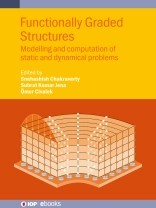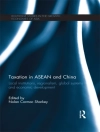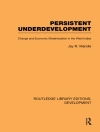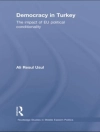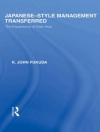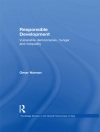This book provides a comprehensive exploration of the static and dynamical behaviours of functionally graded structures, bringing together a wide range of valuable insights. Detailed analyses of bending, buckling, and vibration, are conducted. Additionally, the book showcases cutting-edge modelling techniques for static and dynamic problems, employing analytical, semi-analytical, and numerical approaches. The content of this book is designed to benefit researchers, undergraduate and graduate students, and industry professionals across various disciplines, including structural, mechanical, civil, aerospace engineering, applied mathematics as well as mathematical physics. Moreover, it serves as a valuable resource for educators, as it can be utilized for teaching classical and advanced structural dynamics, computational solid mechanics, along with related computational methods.
Key Features:
- Comprehensive coverage of the latest research and developments of functionally graded structures, providing readers with a valuable resource for advancing their understanding of this important area.
- Presents various computational procedures along with their corresponding simulation results, thereby providing a comprehensive understanding of the topic.
- Addresses the challenges posed by various complicating effects in the mathematical modelling of FG structures.
- Includes different analytical, semi-analytical, and numerical procedures for finding exact and/or approximate solutions of governing equations arising in FG systems.
- Contributions from expert authors with extensive experience in the field, covering diverse range of perspectives and insights.
Tabella dei contenuti
Preface
Acknowledgements
Editors’ biographies
List of contributors
1 The static behavior of functionally graded beams
2 The static behavior of functionally graded sandwich beams
3 The static behavior of functionally graded plates
4 A static bending analysis of porous functionally graded sandwich beams
5 Dynamic analysis of porous functionally graded shell structures using the generalized differential quadrature method
6 Assessing the effects of porosity on the buckling of functionally graded beams
7 Vibration and buckling problems of functionally graded structures
8 Free vibration analysis of porous functionally graded sandwich beams
9 The torsional vibration of functionally graded nanobeams
10 Determining the accurate free vibration response of thin functionally graded plates using the dynamic stiffness method
11 Effect of functionally graded magneto-electro-elastic facings on the damped nonlinear transient response of a sandwich plate with agglomerated CNT core
12 Lamb-type waves in functionally graded orthotropic piezoelectric plates
13 Analysis of Lamb wave propagation in a generalized thermoelastic functionally graded plate
Appendix
References
Circa l’autore
Prof. S. Chakraverty has 30 years of experience as a researcher and teacher. Presently, he is a Senior Professor at the Department of Mathematics (Applied Mathematics Group), National Institute of Technology Rourkela, Odisha. He has authored/co-authored 32 books and published 437 research papers in journals and conferences. He is on the editorial boards of various international journals, including the IOP journal Engineering Research Express. He received the IOPP Top Cited Paper Awards 2021 and 2022 for most cited articles from India, published across the IOP materials journal portfolio in the past three years respectively (2018 to 2020 and 2019 to 2021). He has already guided 22 Ph. D. students and undertaken 16 research projects as PI.
Dr Subrat Kumar Jena currently holds the position of postdoctoral fellow at the Department of Applied Mechanics in the Indian Institute of Technology Delhi, New Delhi, India. He has recently concluded an honorary postdoctoral fellowship at the Nonlinear Multifunctional Composites—Analysis and Design (NMCAD) Laboratory, Department of Aerospace Engineering, Indian Institute of Science (IISc), Bengaluru, India. Dr Jena completed his Ph D at the Department of Mathematics, National Institute of Technology Rourkela, Odisha, India. His research expertise encompasses computational solid mechanics, multifunctional materials, applied mathematics, mathematical modelling, and uncertainty modelling. His research contributions are widely recognized; he has 32 research papers in peer-reviewed international journals, 2 international conference papers, 9 book chapters, and 3 books (one book is in press, two other books are ongoing) to his credit.
Prof. Ömer Civalek has been serving as a professor at the Faculty of Engineering in the University of Akdeniz since 2004. He has received two Ph D degrees in Structural Engineering and Applied Mechanics from Dokuz Eylül University and the University of Firat, respectively. He has made substantial contributions to the field of engineering in the form of over 350 refereed journal papers, more than 50 conference papers, a few book chapters, and 70 papers published in various national journals. His research interests are primarily focused on continuum mechanics, solid mechanics, nanoscale mechanics, the vibration and buckling of plates and shells, computational mechanics, laminated structures, structural dynamics, the modeling of nanostructures, and biomechanics. Professor Civalek has been appointed as a visiting professor for a term of three years (2020–3) at the China Medical University in Taichung, Taiwan.
